Customer Retention Strategies Playbook for Winning in 2025

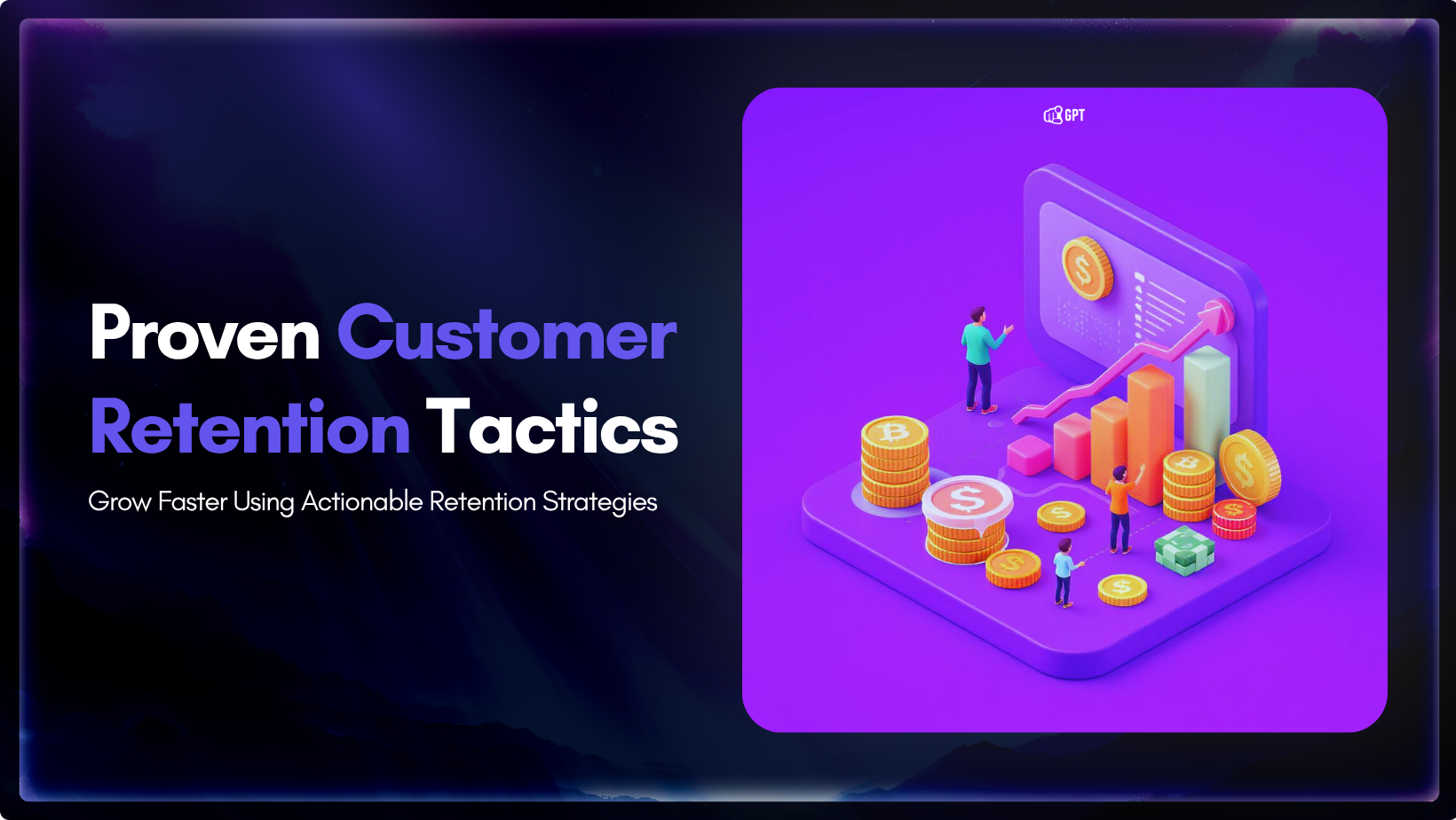
Acquiring new customers is always challenging, but that is just the starting point. Real business growth comes from how many customers you can retain. It often costs up to five times more to bring in a new customer than to keep an existing one.
Companies that focus on retention see higher profits, reduced costs, and more stable growth. Loyal customers purchase more frequently, stay with you longer, and often become your strongest advocates.
Customer retention is more than a metric. It’s about building real relationships and making people feel valued at every touchpoint. When you deliver excellent customer service and memorable experiences, you create the loyalty that lasts—even in tough times.
This blog covers the practical strategies for reducing churn, building trust, and making customer loyalty your advantage. Use it to keep more of the customers you’ve worked so hard to win.
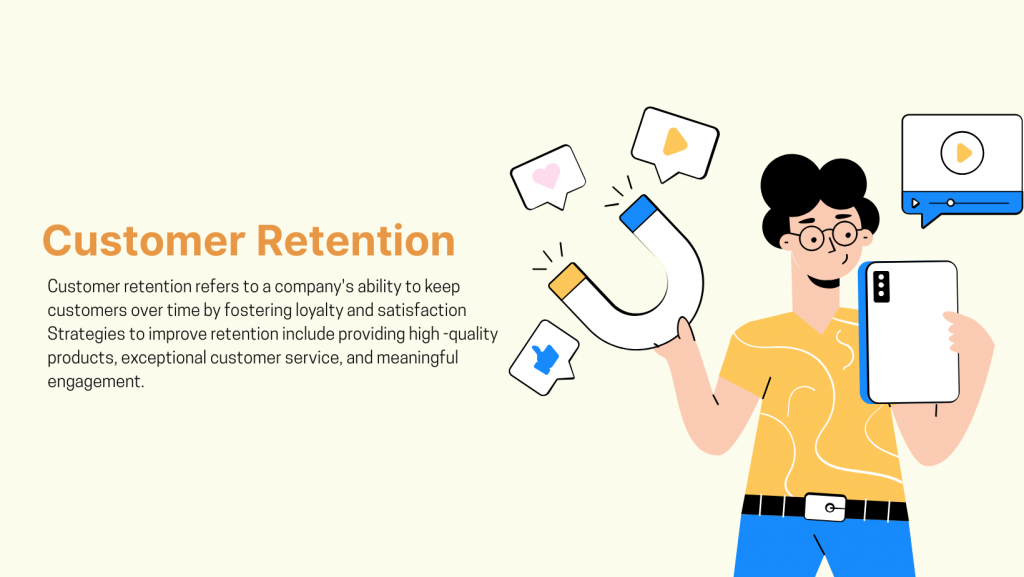
Customer retention means keeping your customers over time, not just attracting them once. It reflects whether people find enough value in your product and service to continue choosing you. For many businesses, this often depends on simple factors: clear communication, reliable support, and delivering what you promise.
When customers stay, they often buy again, sometimes spend more, and may even talk about your business with others. Often, it is quick responses, solving problems without hassle, or making onboarding easy that encourage them to return.
Important metrics to measure customer retention include:
Retention is not just about numbers. It shows that your customers are satisfied and trust your business enough to return. For many companies, this is the clearest sign that you are meeting real needs, not just making sales.
Retention is more than a number. It’s proof that your business delivers value and your customer support team makes every interaction count.
To strengthen retention, you first need to measure it accurately. Calculating your customer retention rate provides a clear snapshot of how well you’re engaging and retaining your audience.
Here’s a straightforward way to do it:
The formula looks like this:
Customer Retention Rate = [(E – N) / S] × 100
Where:
This percentage gives you a practical measure of how effectively your business is keeping its customers. A higher retention rate signals strong customer satisfaction and loyalty, while a declining rate is an early warning to review your customer experience, service, and support.
Perodically tracking this metric helps you spot trends, test new retention strategies, and guide smarter business decisions.
Customer loyalty has changed. In 2025, people expect more than good service. They want useful support, quick answers, and a smooth experience. Keeping customers now requires clear effort across every part of the business.
Retention is no longer just a support goal. Marketing, product, sales, and operations must all work together to deliver a consistent, helpful experience from start to finish. These are the expectations that matter most today.
Customers want their time respected. When they reach out with a question or problem, they expect a fast and simple response. Slow replies, long wait times, and unclear answers push people away. Quick support and clear steps show customers they are in good hands.
People respond to personal attention. When brands recommend products based on past behavior or send helpful messages based on user activity, customers feel understood. Generic responses or irrelevant offers create distance. Personalisation builds a stronger connection by showing that you notice what matters to each person.
Customers connect through chat, email, social media, and phone, and they expect these channels to work together. A conversation that begins in one place should continue without interruption in another. If customers have to repeat themselves, it signals a broken process. A connected experience shows your team is organized and ready to help.
Great support doesn’t wait for a complaint. It solves problems before they grow. This might include sending reminders, offering quick tips during onboarding, or checking in after a key action. These small steps prevent confusion and build trust over time.
Clear communication helps people feel safe. Customers want to know what they are paying for, how their data is used, and what to expect if something goes wrong. Vague terms or hidden costs create doubt. Being honest and direct shows that you respect your customers.
Automation is useful, but when issues are complex, people want a real conversation.
Empathy, patience, and clear answers often matter more than speed.
Every team, from marketing to product to support, should work together to deliver one consistent and human experience.
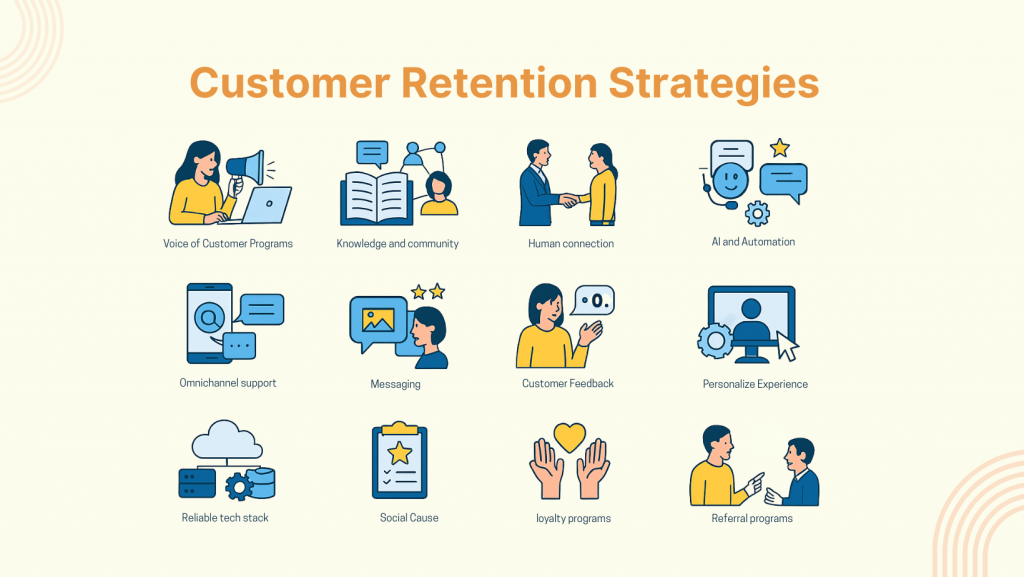
The way customers define loyalty has changed. In 2025, people want fast support, clear communication, and a service that feels built around their needs.
Here are 12 simple strategies your team can use to keep customers coming back.
Many businesses run VoC programs but treat them as data collection exercises. A survey only matters if something changes because of it.
Use feedback from calls, reviews, and everyday conversations to guide what gets fixed or improved first.
When people later see that the confusing checkout is now simpler because others spoke up, it strengthens the connection.
Let customers know you acted. A short “We’ve updated this based on your feedback” message has more impact than another marketing email.
A good knowledge base is not a dumping ground. It should feel as if you built it to save your customers from waiting for help.
Keep answers short, searchable, and supported with screenshots or short clips. Pair it with a community where people swap tips and real-world solutions.
This does two things at once. It cuts your support volume and tells customers “we prepared for your question before you even asked”.
Transactional service solves the problem at hand. Relational service strengthens the bond. Train teams to identify the emotional state behind a request. A late delivery might carry frustration because of an upcoming event, not just because it is late. Responding with empathy and adjusting your solution to the situation builds a connection that lasts beyond the transaction.
Small touches like personalised thank-you notes after major purchases or follow-ups that acknowledge past interactions create the sense of a relationship rather than a series of isolated tickets.
A customer cancelling after three months rarely decided that day. There were signs earlier.
Track patterns such as features they stopped using, logins that suddenly dropped, or repeated small errors. Reach out while they are still in the “thinking about it” stage.
A short check-in or tip can turn an exit into a recovery. It is easier to save an account before they’ve mentally left.
If a customer starts on chat, moves to email, and then calls, they should not need to start over each time.
Omnichannel support means meeting customers where they are and making sure the experience stays connected across every touchpoint.
Make sure your team can see the full conversation history, no matter the channel.
The less a customer repeats themselves, the more they feel you are paying attention.
This continuity can make your service feel effortless in a way that is hard for competitors to copy.
Live chat and in-app messages are often treated as reactive tools. They can be much more.
Use them to share small wins with customers, update them on something they care about, or simply check in.
The key is to be present without being intrusive.
When customers feel like they have an open line to you, they will use it. And that usage keeps them close.
Asking for feedback should not feel like homework.
Instead of long quarterly surveys, place short one-question prompts right after an interaction. The response rate will be higher and the feedback fresher.
Over time, these quick pulses give you a clearer view of changes you need to make before small issues grow.
Customers notice when you remember more than just their name.
If someone paused their subscription, reach out when you have an update that fits their needs. If they always buy a certain product, let them know when it is back in stock.
This is not about automation for the sake of it. It is about noticing patterns and responding in ways that feel considerate.
Your tech stack is part of your customer experience, even if they never see it.
If your systems are slow, your team’s responses will be slow. If data is scattered, answers will be incomplete.
Choose tools that talk to each other and keep information in one place. This makes your team faster, sharper, and more confident in helping customers.
People are loyal to brands that stand for something real.
You don’t need to sponsor global causes to make an impact. Supporting a local charity, using sustainable packaging, or funding a small community project can be just as powerful if it aligns with your customers’ values.
When you care about what they care about, your relationship goes beyond transactions.
If your loyalty program makes rewards feel distant, customers lose interest.
Give them progress they can see, rewards they can claim quickly, and surprises they were not expecting.
Small wins along the way keep them engaged until the bigger rewards arrive.
It is the same principle that keeps people playing games—they enjoy steady progress.
When customers have a good experience, they often tell others. A referral program turns that natural word of mouth into a simple and rewarding process.
By making it easy to share and offering something valuable in return, you encourage satisfied customers to bring in new ones.
The best programs benefit both sides by rewarding the person who refers and giving the new customer a welcome offer. When the process is clear and the rewards feel fair, referrals help grow your customer base with people who are more likely to stay loyal.
A retention program only works if it is measured with intention. The aim is not just to collect numbers but to understand what they mean and act before small issues turn into permanent losses.
The standard metrics still matter: retention rate, churn rate, customer lifetime value, and Net Promoter Score. Their real value comes from how you apply them.
Look at how they change over time, then break them into smaller views such as customer segments, onboarding experiences, or feature usage.
A stable retention rate can appear healthy until you see that your most profitable customers are quietly leaving. A high average CLV can mask underperforming groups that are costing you more than they return.
High-level numbers are only the starting point. To understand why customers stay or leave, combine them with operational signals that reflect real experiences:
Data will not always explain sudden changes. Often, your support or customer success teams notice early signs before metrics shift. A confused new user, a repeated question, or a sudden spike in complaints can point to issues that have not yet shown up in reports. These human observations are as important as any dashboard.
Improvement comes from combining measurement with action:
Most of you as business owners already know that Retention is often more cost-effective than acquisition.
Econsultancy reports that 82 percent of companies believe it is a better investment, and the rising cost of digital advertising makes this even more true. Customers who stay tend to spend more, refer others, and strengthen your brand’s reputation. Well-designed referral programs can generate returns up to 25 times their cost, and referred customers often have three to four times higher lifetime value compared to those acquired through paid ads.
A strong retention program is never finished. It requires consistent attention, collaboration across teams, and a focus on improving the experience at every stage. When it becomes part of the way you work, it quietly protects revenue, builds loyalty, and creates growth that lasts.
Keeping your customers means more sales, lower costs, and steady business growth. Loyal customers often come back and bring their friends.
Look at how many customers return, how often they buy, and if your churn rate is low. Good feedback and repeat orders are strong signs.
Give great service, listen to their feedback, personalize your messages, and thank them for sticking around. Small gestures go a long way.
Yes. Fast, friendly help builds trust and keeps people coming back. Answer questions quickly and fix problems without hassle.
Yes. Even simple tools can help you keep in touch and solve problems. Every customer counts when you’re growing a business.
People like to feel seen. If you remember their preferences or send offers they care about, they’ll want to do business with you again.
Ask them why. Use surveys or direct messages to learn what went wrong. Fix those issues as soon as you can.
Use this formula: (Customers at end of period – New customers) ÷ Customers at start of period, then multiply by 100 for a percentage.
Tools like YourGPT help you answer questions fast, send reminders, and keep track of customer needs—all in one place.
Check your numbers every month. Review your approach a few times a year to keep up with what your customers want.
Customer retention drives sustainable growth. In a market full of choices, businesses that offer responsive customer service, reliable support, and a personal touch stand out. Retained customers bring higher revenue, generate referrals, and provide stability for long-term success.
To boost retention, listen to your customers, respond to feedback, and empower your support team to deliver exceptional service. These steps lead to lower acquisition costs, higher lifetime value, and stronger brand advocacy.
YourGPT provides the tools to make such outcomes possible. By streamlining customer support, personalising interactions, and unifying conversations across every channel, YourGPT helps you build lasting customer relationships and delivers a better experience for every user.
Focus on proven retention strategies and use technology that puts customers first. When you create real value and ensure every customer feels heard, loyalty will follow.
Join 10000+ Business using YourGPT AI to transform business operations!
No credit card required • 7 days access
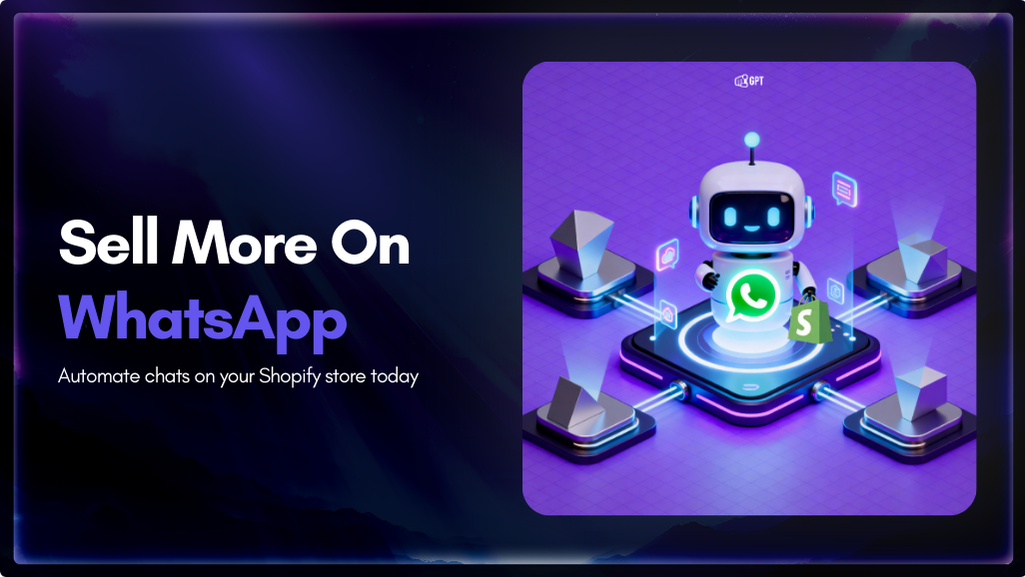
Shopify stores often use a chatbot on their website to handle product questions, order updates, and support. But customers also message on WhatsApp expecting the same quick answers. Most of them already use WhatsApp throughout the day, so reaching out there feels natural. A chatbot that works across both channels responds in seconds, guides purchase […]

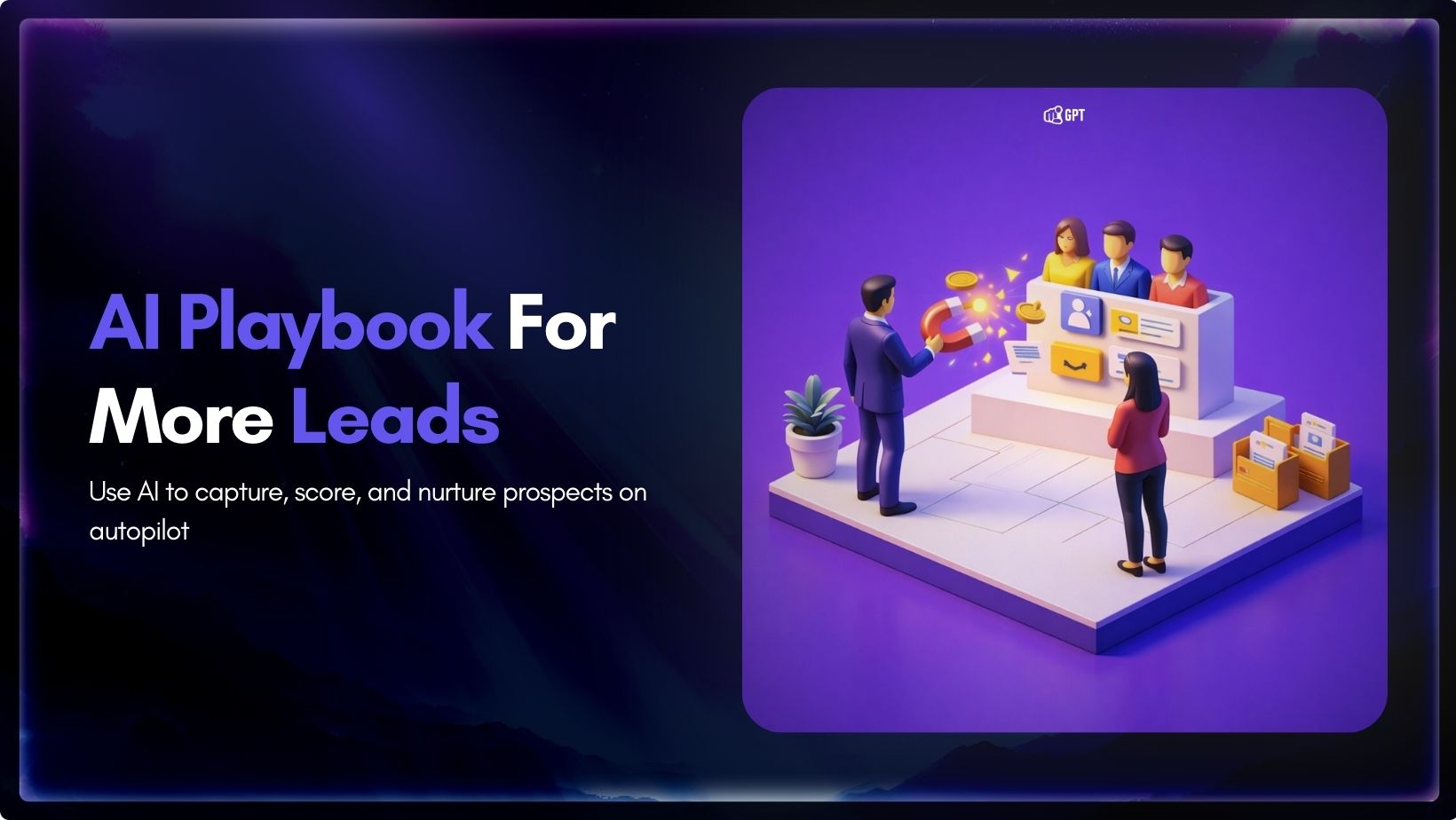
Most businesses do not struggle to generate leads. They struggle to know which ones are worth acting on. Forms get filled, DMs arrive, emails are opened, and chats happen across multiple tools. Some prospects convert. Most do not. The real problem is that there is no reliable way to tell, early enough, which signals actually […]

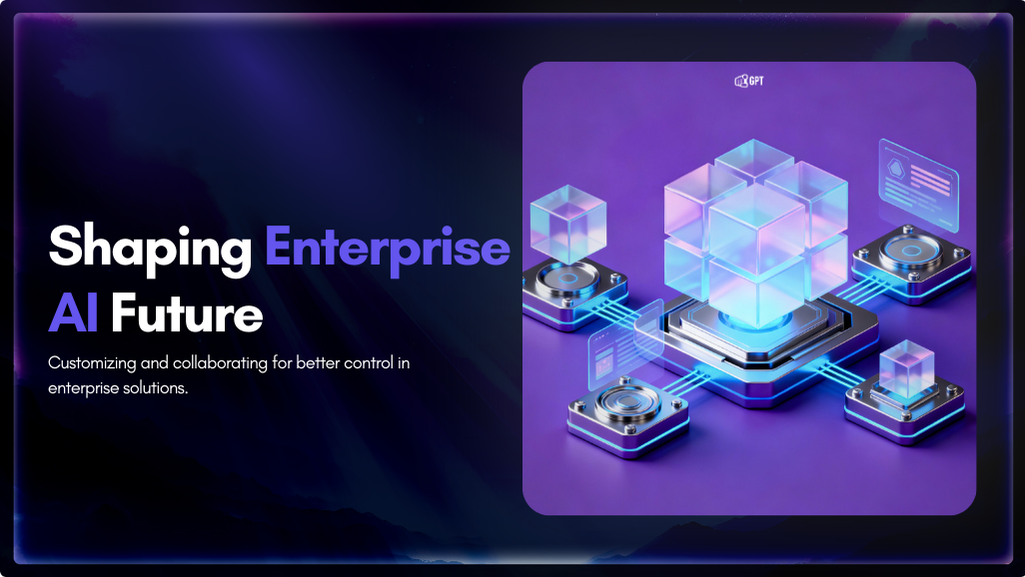
Artificial Intelligence has advanced quickly over the past five years, moving from an experiment to a standard component of modern business. AI has become a central part of enterprise strategy. 88% of organizations are now using AI. This figure has increased from 78% the year before. This transformation is reshaping how companies run, communicate, and […]

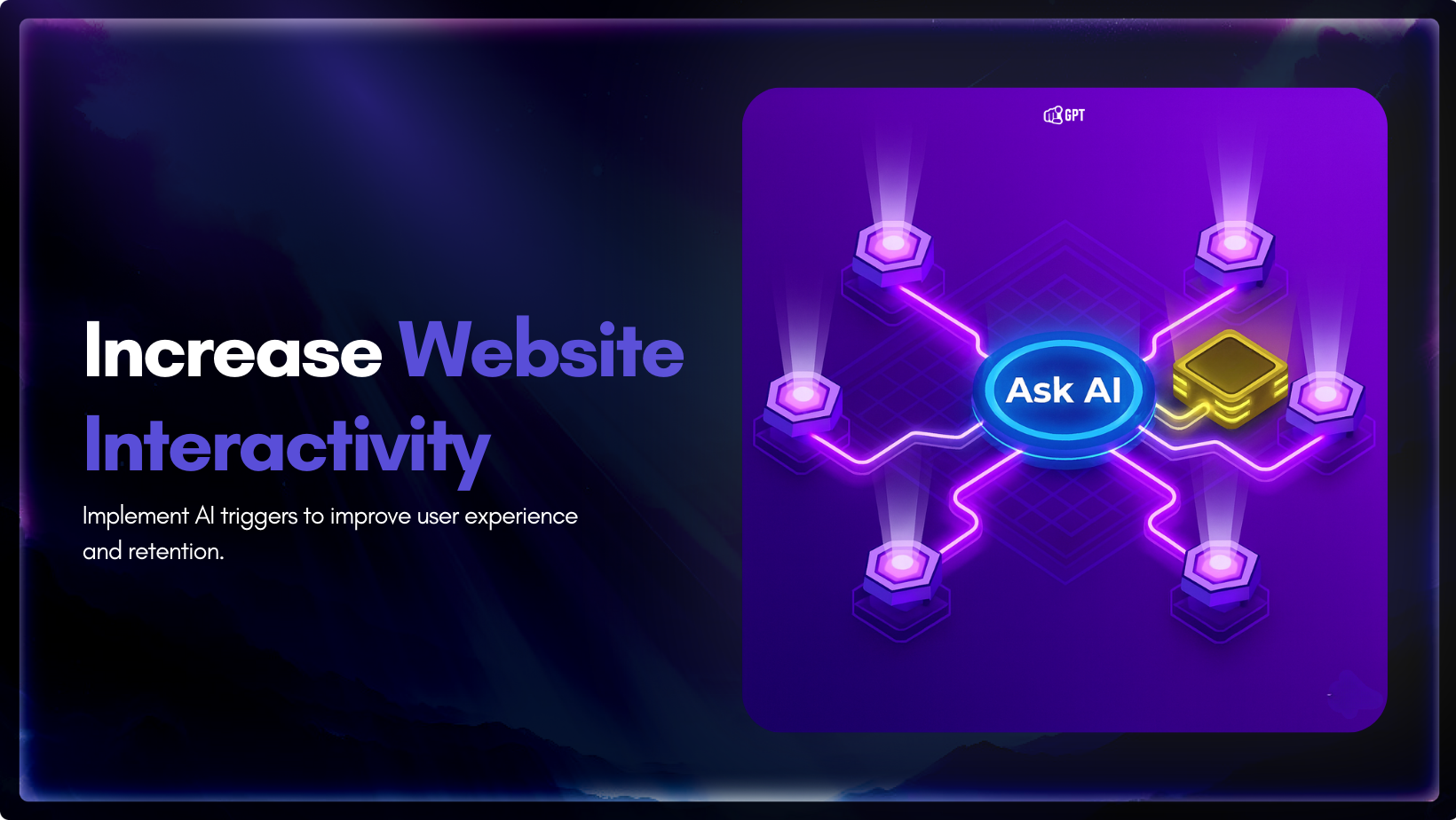
You invest time writing your website copy. You explain features, pricing, and how everything works. The information is there. Still, some visitors leave without clarity, and small gaps in understanding often stop them from moving forward. This happens because a static page cannot adjust to what they want at that moment. They skim a section, […]

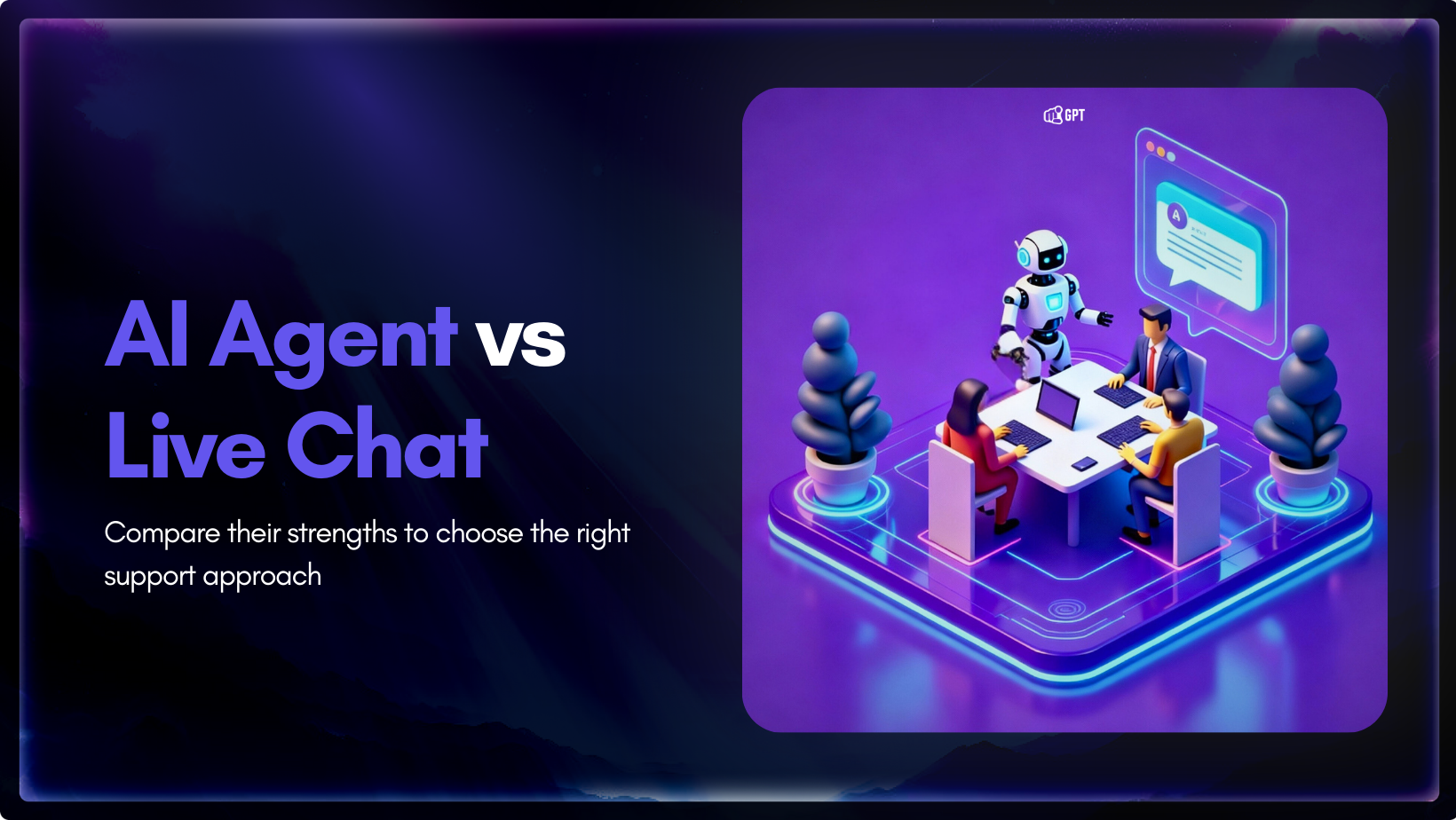
AI agent and live chat each play a different role in customer support, and the choice between them influences how a team handles growth. Companies are moving toward faster support models, and one clear trend is the use of AI to reduce operating costs by up to 30%. The difference shows up when ticket volume […]

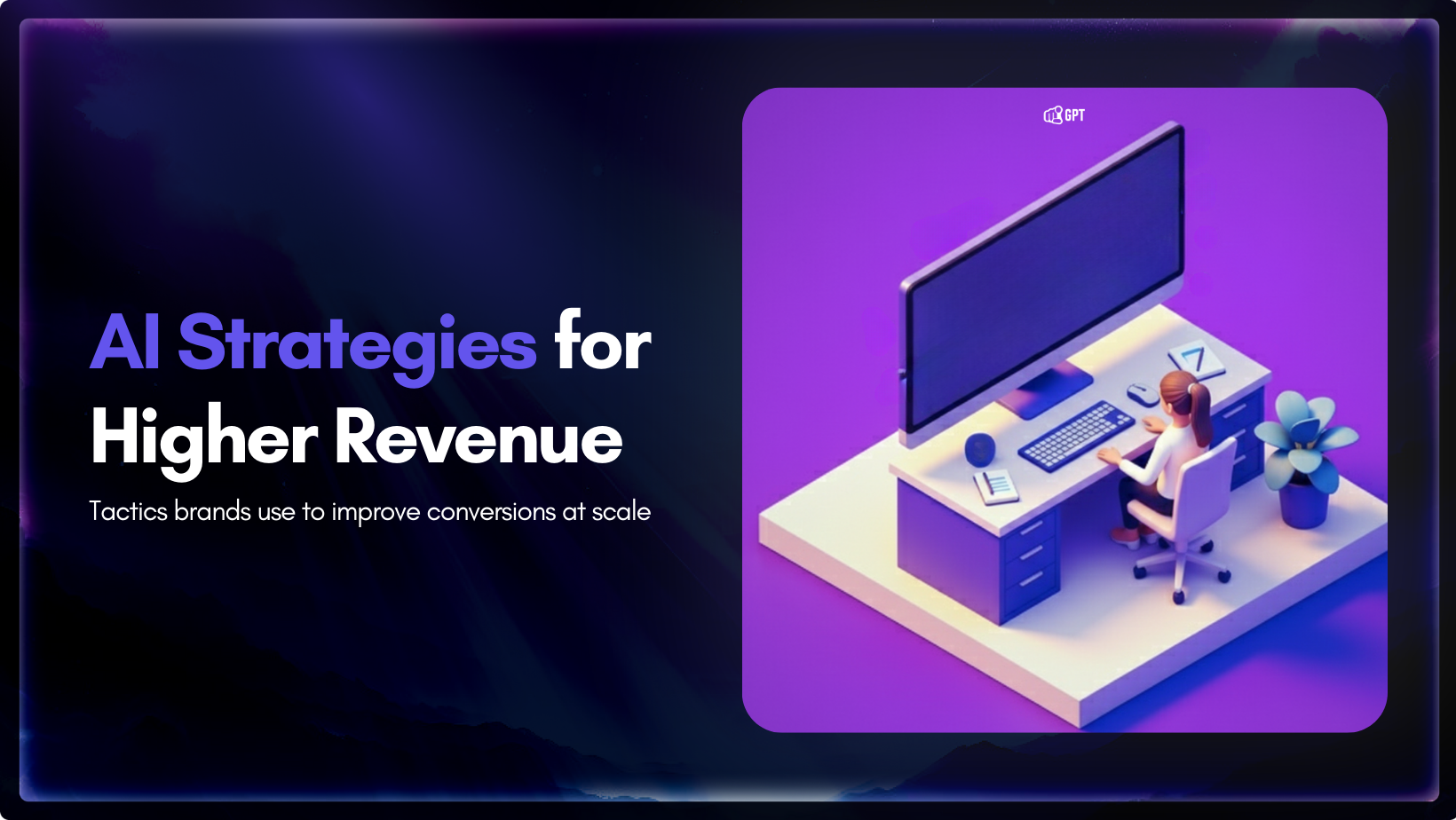
You have definitely heard about the use of AI in marketing. But have you ever seen or learned how it can actually drive revenue? Well, firms using AI in marketing and sales report significant benefits. According to a recent study by McKinsey & Company, revenue increases from AI show up most in marketing and sales, […]
